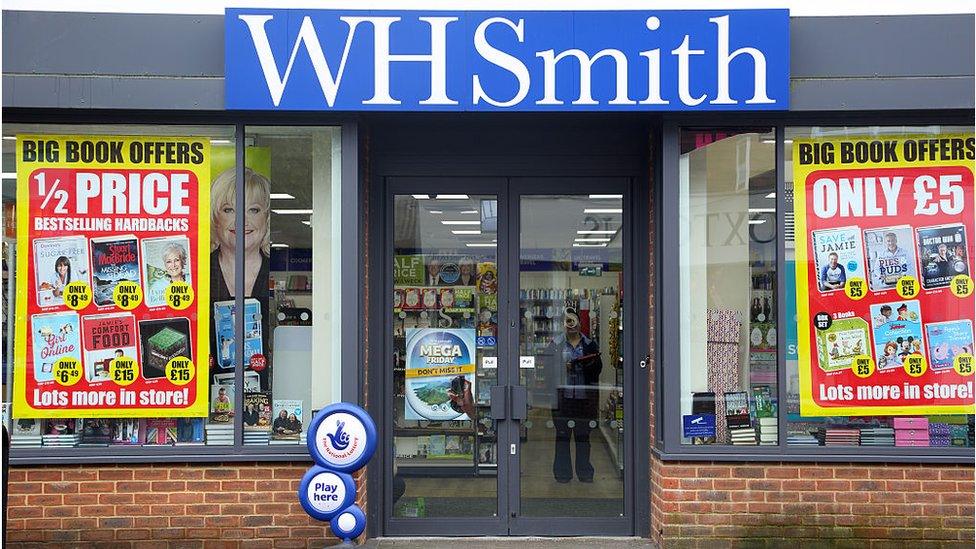WH Smith in spat with Telegraph over pricing
- Published
- comments

The Daily Telegraph newspaper placed with business and computing magazines in a WH Smith store
Retailer WH Smith removed the Daily Telegraph newspaper from its shelves in UK railway station outlets in a dispute over pricing.
The move comes after the Telegraph raised prices on its daily and Sunday editions by 25% earlier this month.
However, the publisher has not yet increased the amount it pays retailers to carry the newspaper.
Twitter users have been uploading photos of Telegraph newspaper stacks being moved within shops.
Telegraph papers were moved out of the newspaper section and on to magazine racks in High Street shops and airport travel outlets, but were still on sale.
However, the newspaper was removed entirely from about 120 shops in railway stations, the Financial Times reported, external on Wednesday 19 February.
WH Smith and the Telegraph told the BBC in a joint statement on Friday 21 February: "Both parties are pleased that discussions have now been resolved. The Telegraph will return to its usual position on newsstands in all branches of WH Smith from this weekend.
"The Telegraph and WH Smith look forward to working together with activity which supports the Telegraph's subscription strategy."
New retail prices
From 1 February, the daily edition of the Telegraph now retails at £2.50, while the Sunday Telegraph is priced at £2.80.
Retailers have been told that they will continue to receive 43p per copy sold until August. From August onwards, the Telegraph will pay retailers the higher price of 51.2p per copy sold.
Allow X content?
This article contains content provided by X. We ask for your permission before anything is loaded, as they may be using cookies and other technologies. You may want to read X’s cookie policy, external and privacy policy, external before accepting. To view this content choose ‘accept and continue’.
An internal memo seen by the FT on 14 February instructed more than 500 WH Smith stores to move the Daily Telegraph and the Sunday Telegraph from the "news" section and place the papers with magazines "with immediate effect".
A number of people have posted pictures on Twitter wondering why the Telegraph was placed in front of popular business magazines such as the Economist, Bloomberg and Prospect.
Allow X content?
This article contains content provided by X. We ask for your permission before anything is loaded, as they may be using cookies and other technologies. You may want to read X’s cookie policy, external and privacy policy, external before accepting. To view this content choose ‘accept and continue’.
A sign in one store said: "The Telegraph - These newspapers can be found alongside Business Magazines".
Allow X content?
This article contains content provided by X. We ask for your permission before anything is loaded, as they may be using cookies and other technologies. You may want to read X’s cookie policy, external and privacy policy, external before accepting. To view this content choose ‘accept and continue’.
Decline in newspapers
Newspapers continue to see slides in advertising revenue for print, as brands increasingly focus more on digital and broadcast advertising.
Sales of the print editions have plummeted in recent years, with the Daily Telegraph averaging a daily circulation of 310,586. The Sunday Telegraph sells, on average, 244,351 copies a week.
In October, the billionaire Barclay twins put the Daily Telegraph and the Sunday Telegraph up for sale after the publisher reported a 94% plunge in full-year profits compared with the previous financial year.
At the same time, the Telegraph announced that it would end its promotion offering WH Smith customers a free copy of the newspaper when they bought a bottle of water, as it refocused on selling more subscriptions to its website.
A source has told the BBC the brothers are not under any time pressure to sell the paper, which could happen over the next 12-18 months.
- Published10 January 2020

- Published29 May 2019
